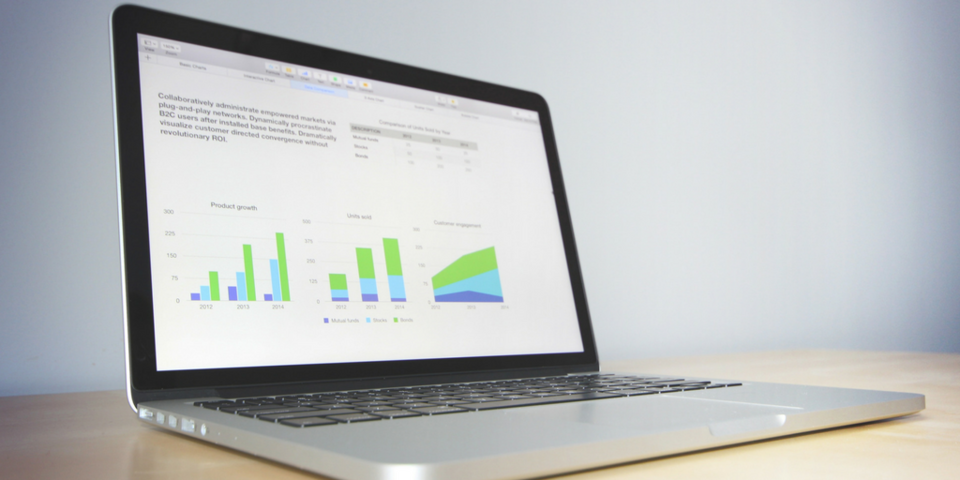The Art and Science of Communication Program Measurement: Measuring Social Media

Posted By Kathy Wilson on June 21, 2017
In the first post of this two-part series on communication measurement, I shared thoughts about what to benchmark and track when measuring the value of earned media. This time I’m turning my attention to social media.
Nearly every business-to-business and business-to-consumer brand has embraced social media as a powerful channel to share content and engage 1:1 with key influencers. But what are some of the key metrics brands should consider when assessing whether their social strategies are yielding results?
Competitive Benchmarking
Smart brands know not every social platform makes sense for their business. After all, a good social media program can be resource-intensive. At the outset of our social programs, Tier One conducts a benchmarking exercise to evaluate how top competitors are using social, and on which platforms. This exercise helps us make recommendations for the social platforms that will make the most sense for our clients to pursue. It also gives us an important preliminary metric for measuring how our social media efforts make an impact over time.
Critical Metrics
As with earned media measurement, there are many factors to measure. Here are six we (and our clients) like:
Followers
This is the most basic measure of social progress. How many likes and follows is the social program helping to drive? Pick a percentage increase as your initial goal (something that may be a bit of a stretch, but realistic) and increase it over time. If you find yourself in a “followers rut,” consider some paid social strategies to help give your numbers a boost. When executing these paid campaigns, however, be careful to target audience members accurately, such as targeting followers of competitors or by interests relevant to your brand. While having a lot of followers looks good, having quality followers is what will deliver the most meaningful results.
Impressions
You’re Tweeting and posting like mad. But how many times are these social shares being seen? Measuring impressions gives you the answer to that question.
Influencer Engagement
Sure, it’s nice to increase your followers. But it doesn’t matter if you’re not engaging with people who are influential in your market. The Holy Grail of social is to get people participating in the conversation about your brand and, in turn, sharing your content and engaging with your brand (e.g., Twitter retweets, Facebook and LinkedIn likes and shares, comments and replies).
It’s important to target your influencers upfront through careful research. For instance, which key reporters and editors are active on social media? Are there academic or analyst thought leaders you want to target? Create a list and be sure your brand is following these individuals as the first step to getting them to engage with you. RightRelevance is a great tool to get a quick snapshot of your top influencers based on keywords. Be sure to analyze these lists closely to make sure you’re truly focusing on relevant influencers. Then measure over time whether these individuals begin to engage with your brand.
Share of Voice
Measuring social share of voice helps determine how effectively your brand’s messages are dominating the conversation. You can measure share of voice against key competitors, or get even more specific and measure your brand’s share of voice around key terms (e.g., “data governance software”).
Volume
Is the volume of your brand’s social activity (tweets/posts per day) increasing over time? Once a social program is running like a well-oiled machine, it will be easier to increase the volume of your daily activities to provide a further boost to social success.
Site Referrals
Lastly, is your social content helping drive eyeballs to your site or the other marketing content they’re supporting? This is a critical measure of whether your social activity is making a meaningful difference to your company’s overall marketing goals.
The Right Tools for the Job
The good news is, there are dozens of tools available to measure social media success. Tier One uses a tool called IQMedia, which also helps us track earned media coverage. Others include Meltwater, Radian6, Sysomos, and SproutSocial. Most social platforms themselves (e.g., LinkedIn, Twitter, Facebook) also have built-in analytics that put measurement right in your social feeds (visible only to you). Google Analytics also offers a deeper dive into how point-in-time content sharing may be driving eyeballs to a company’s site.
Measurement Frequency
Social media program managers pay close attention to metrics on a daily basis as they track how other components in the marketing mix are driving social success. When reporting for clients, Tier One typically develops reports on a quarterly and year-end basis to measure improvement over the previous quarter or year period.
In closing, choose your preferred social metrics and start tracking now. Be consistent with the approaches and tools you use to calculate metrics over time. Take a deep dive into any results that surprise you to understand the underlying drivers. These insights will enable you to tweak social levels over time to ensure your program is effective as possible in helping your brand reach the influential audiences you crave.

Kathy Wilson
Kathy Wilson is a Co-founder and Managing Partner at Tier One, where she leads the agency's Boston office and serves as a strategic client counselor. She taps her three decades of experience in B2B and B2C technology, digital healthcare, and financial services — including work counseling major brands like SAP, Citrix, Ultimate Software, GHX, and Ally Financial — to help clients meet critical business and marketing objectives. Kathy is a die-hard Red Sox fan and loves nothing better than a summer day at Fenway Park.


